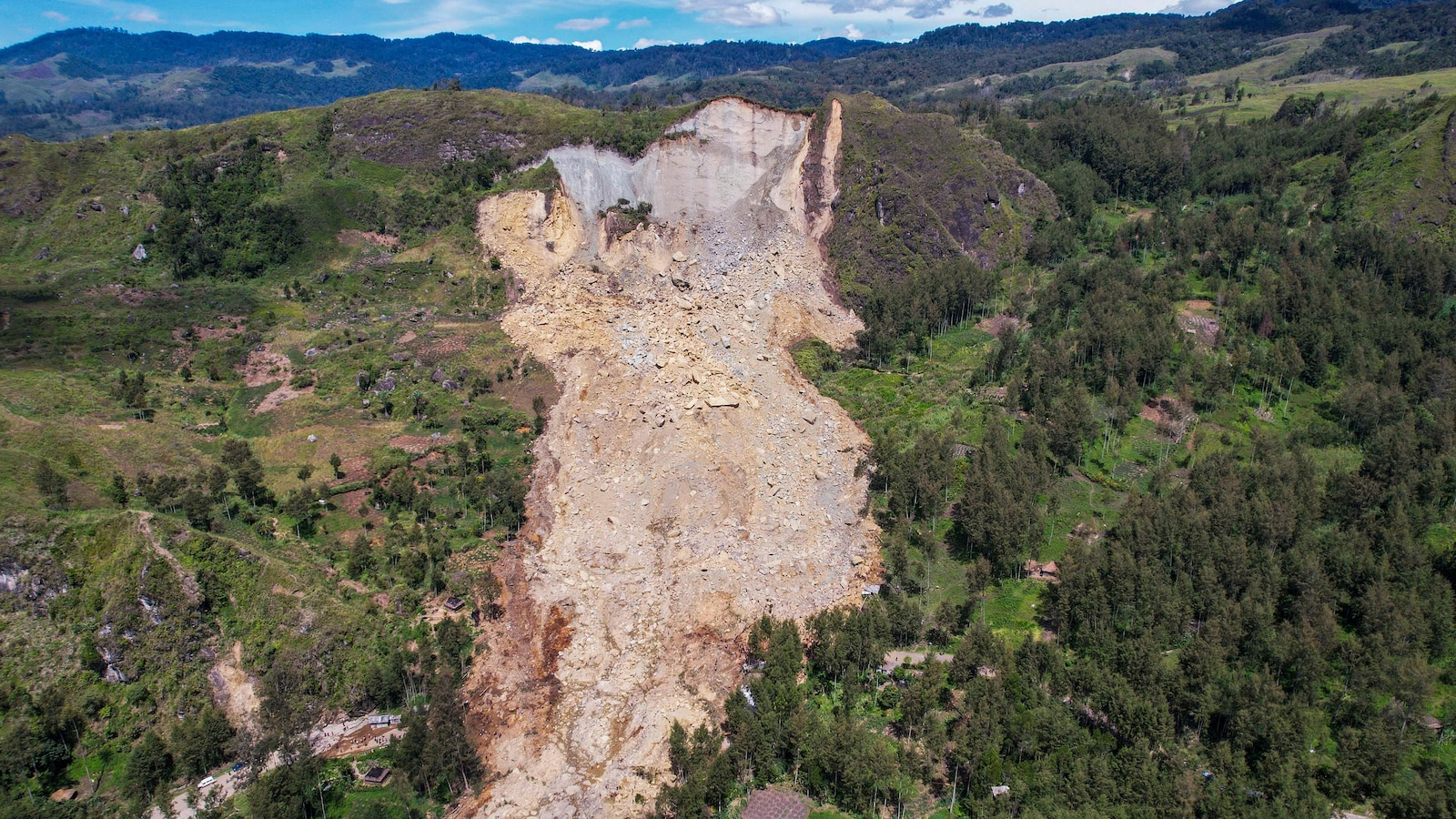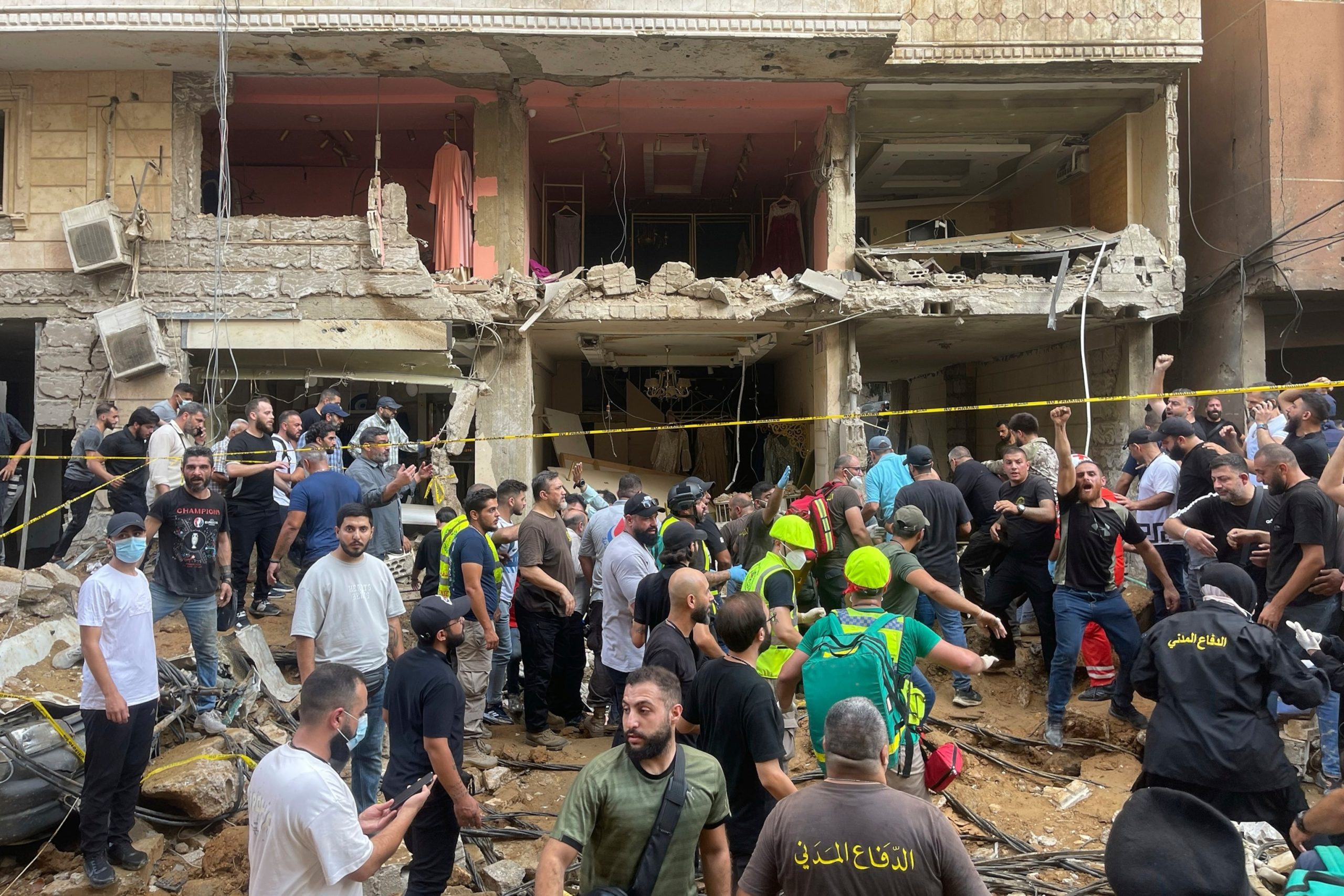
MELBOURNE, Australia — Authorities fear a second landslide and a disease outbreak are looming at the scene of Papua New Guinea’s mass-casualty disaster because of water streams and bodies trapped beneath the tons of debris that swept over a village, a United Nations official said Tuesday.
A mass of boulders, earth and splintered trees devastated Yambali in the South Pacific nation’s remote highlands when a limestone mountainside sheared away Friday. The blanket of debris has become more unstable with recent rain and streams trapped between the ground and rubble, said Serhan Aktoprak, chief of the International Organization for Migration’s mission in Papua New Guinea.
The U.N. agency has officials at the scene in Enga province helping shelter 1,600 displaced people. The agency estimates 670 villagers died, while Papua New Guinea’s government has told the United Nations it thinks more than 2,000 people were buried. Five bodies had been retrieved from the rubble by Monday.
“We are hearing suggestions that another landslide can happen and maybe 8,000 people need to be evacuated,” Aktoprak told The Associated Press.
“This is a major concern. The movement of the land, the debris, is causing a serious risk, and overall the total number of people that may be affected might be 6,000 or more,” he said. That includes villagers whose source of clean drinking water has been buried and subsistence farmers who lost their vegetable gardens.
“If this debris mass is not stopped, if it continues moving, it can gain speed and further wipe out other communities and villages further down” the mountain, Aktoprak said.
Scenes of villagers digging with their bare hands through muddy debris in search of their relatives’ remains were also concerning.
“My biggest fear at the moment is corpses are decaying, … water is flowing and this is going to poise serious health risks in relation to contagious diseases,” Aktoprak said.
Aktoprak’s agency was raising those concerns at a disaster management virtual meeting of national and international responders Tuesday.
The warning comes as geotechnical experts and heavy earth-moving equipment are expected to reach the site soon.
The Papua New Guinea government on Sunday officially asked the United Nations for additional help and to coordinate contributions from individual nations.
An Australian disaster response team was scheduled to arrive Tuesday in Papua New Guinea, which is Australia’s nearest neighbor. It will include a geohazard assessment team and drones to help map the site.
“Their role will be particularly helping perform geotechnical surveillance to establish the level of the landslip, the instability of the land there, obviously doing some work around identifying where bodies are,” Australia’s minister for emergency management, Murray Watt, told Australian Broadcasting Corp.
Australia’s minister for the Pacific, Pat Conroy, said the government would also provide long-term logistical support for clearing debris, recovering bodies and supporting displaced people. The government announced an initial aid package of 2.5 million Australian dollars ($1.7 million).
“This is an incredibly inaccessible part of Papua New Guinea and it’s a really challenging process for everyone involved,” Conroy said.
Earth-moving equipment used by Papua New Guinea’s military was expected to arrive soon, after traveling from the city of Lae, 400 kilometers (250 miles) to the east, said Justine McMahon, country director of for humanitarian agency CARE International.
The landslide buried a 200-meter (650-foot) stretch of the province’s main highway.
“One of the complicating factors was the destruction of parts of the road plus the instability of the ground, but they have some confidence that they can take in heavy equipment today,” McMahon said Tuesday.
An excavator donated by a local builder Sunday became the first piece of heavy earth-moving machinery brought in to help villagers who have been digging with shovels and farming tools to find bodies.
Papua New Guinea is a diverse, developing nation with 800 languages and 10 million people who are mostly subsistence farmers.
The devastating landslide that struck the village of Hela in Papua New Guinea last week has left the community reeling, with the death toll currently standing at 35 and dozens more still missing. As rescue efforts continue to search for survivors and recover bodies, concerns are growing about the potential for a second landslide and a disease outbreak at the disaster site.
The initial landslide, triggered by heavy rains and deforestation, swept through the village, burying homes and trapping residents underneath tons of mud and debris. The unstable terrain in the area, combined with ongoing rainfall, has raised fears that another landslide could occur, further endangering rescue workers and survivors.
In addition to the immediate threat of a second landslide, there is also a growing concern about the potential for a disease outbreak in the aftermath of the disaster. The lack of clean water, sanitation facilities, and medical supplies in the area poses a significant risk for the spread of waterborne diseases such as cholera, typhoid, and dysentery.
The crowded conditions in temporary shelters and makeshift camps set up for displaced residents also increase the likelihood of communicable diseases spreading rapidly among the vulnerable population. Without proper hygiene practices and access to medical care, the risk of a disease outbreak looms large over the disaster site.
Local authorities and aid organizations are working tirelessly to provide emergency relief supplies, medical assistance, and sanitation facilities to prevent the spread of disease and mitigate the risk of a second landslide. However, the challenging terrain and limited resources in the remote region are hampering efforts to reach all affected areas and provide assistance to those in need.
As the situation continues to unfold in Hela, it is crucial for government agencies, humanitarian organizations, and the international community to come together to support the ongoing relief efforts and address the immediate needs of the affected population. By working collaboratively and swiftly, we can help prevent further loss of life and ensure that those impacted by this tragedy receive the assistance they desperately need.


